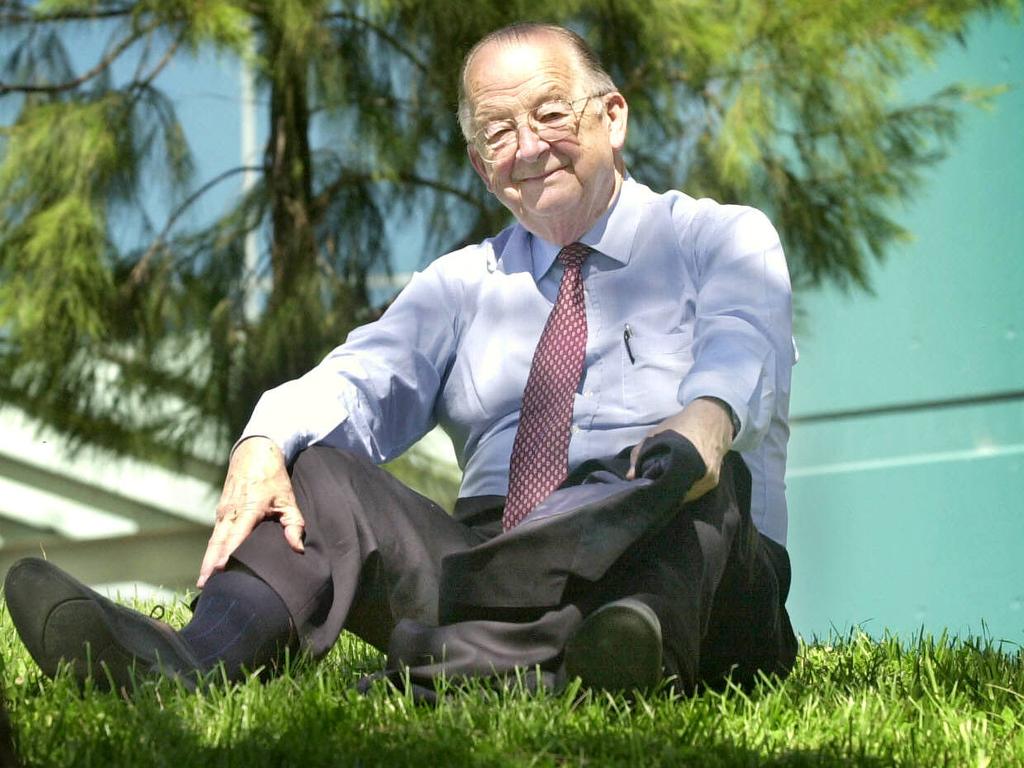2004 Cabinet Papers: Bid to curb land councils and open Top End to exploration and mining
The Howard government weighed a detailed plan to open the Top End to economic development after cancelling an experiment with Indigenous self-government.

The Howard government weighed a detailed plan to rein in the Northern Territory’s big land councils and open the Top End to economic development almost immediately after cancelling the nation’s experiment with Indigenous self-government: the Aboriginal and Torres Strait Islander Commission.
Cabinet documents from April 15, 2004, show that while the government had been gunning for ATSIC for more than a year, the end of the federal representative body was swift. John Howard and his ministers agreed to dismantle ATSIC without any cabinet submission, a little more than two weeks after then opposition leader Mark Latham went first by announcing he would do it if elected later that year.
Cabinet signed off on a four-page plan to absorb ATSIC services back into mainstream government departments. Later that day, the prime minister held a press conference declaring ATSIC had become “too preoccupied with what might loosely be called symbolic issues and too little concern(ed) with delivering real outcomes for Indigenous people”.
This was in part a reference to the clash of ideals with ATSIC’s combative chairman Geoff Clark, who was pursuing a treaty. Clark was ultimately ATSIC’s downfall. His tenure was beset by scandal, including four rape allegations. He is now in jail for defrauding his community of Framlingham in Victoria’s western district of almost $1m.
The 2004 cabinet papers also reveal the Howard government’s careful approach to its other major move in Indigenous affairs in 2004; a reckoning with NT land councils.
The cabinet had previously opted to delay and temper reforms in anticipation of a hostile Senate.
In a 65-page document presented to cabinet on March 29, 2004, then Indigenous affairs minister Amanda Vanstone listed the aims of the NT reforms, including more mining, economic development on Aboriginal land, external audits for land councils and a town leasing system that could ultimately lead to individual home ownership. This required significant changes to the nation’s first land rights laws.
“The ALRA (Aboriginal Land Rights Act) has entrenched powerful land councils which are seen as politicised, inefficient and unresponsive to local Aboriginal people and other stakeholders,” the cabinet submission states.
Under the proposed changes, land councils would no longer be funded according to a formula but according to their workload and outcomes. They would also lose monopolies over decisions on Aboriginal lands as new, smaller land councils established themselves.
The proposals were then evolving from a harder line. Initially, influential figures in the Coalition wanted to get rid of communal land title, which they saw as an impediment to economic empowerment.
This is partly because it is extremely complicated for an individual to own a house or land in their own name if the area is under communal title. The cabinet document explained there was compromise after consultations with the NT government, land councils and industry. Cabinet authorised senator Vanstone to draft legislation in line with the central aims.
In 2006, both houses voted for the Coalition’s proposed changes to the Aboriginal Land Rights Act (Northern Territory) 1976, including greater access to Aboriginal land for development, especially exploration and mining, and changes to land council funding. The township leasing system is administered from Canberra, allowing developments and even home ownership. Only the people of the Tiwi Islands have opted into the home ownership scheme.







To join the conversation, please log in. Don't have an account? Register
Join the conversation, you are commenting as Logout